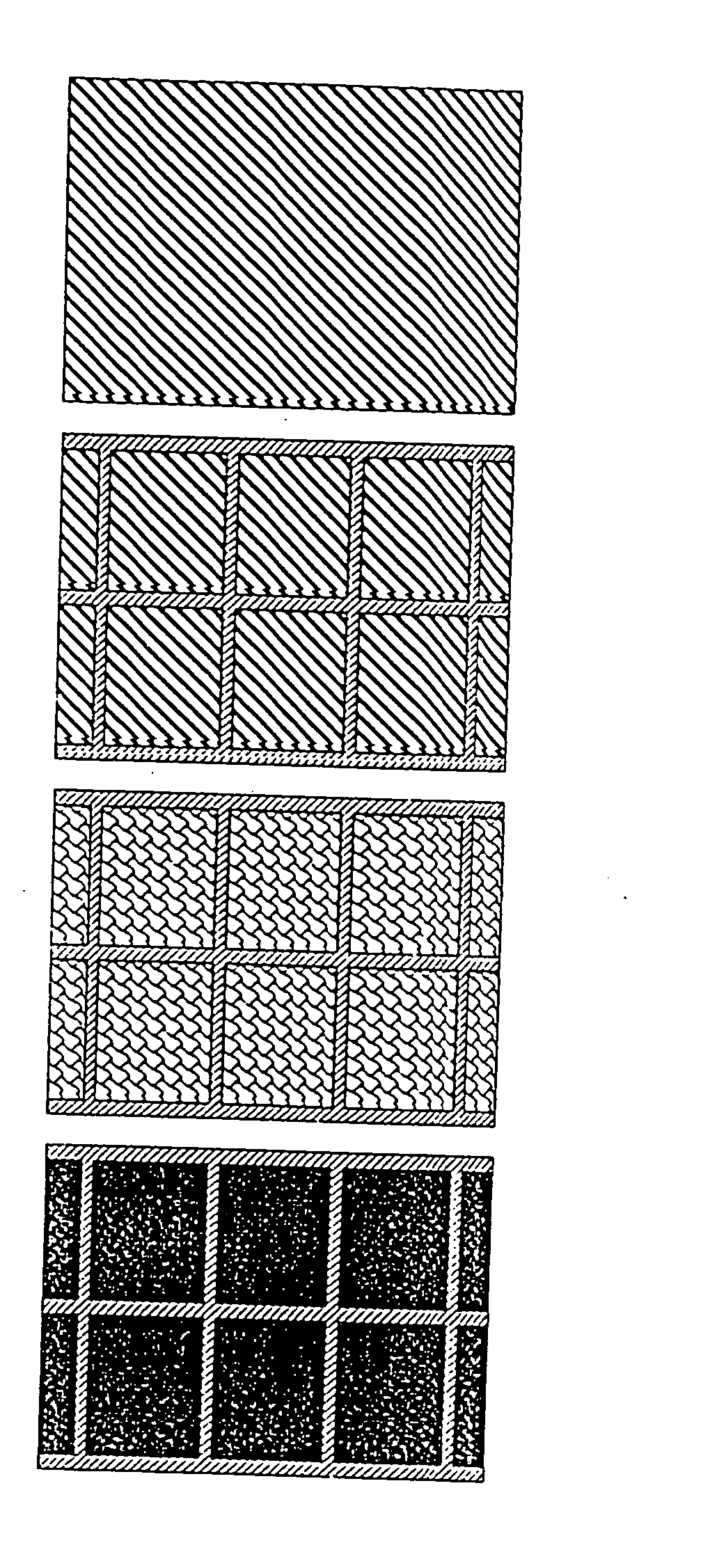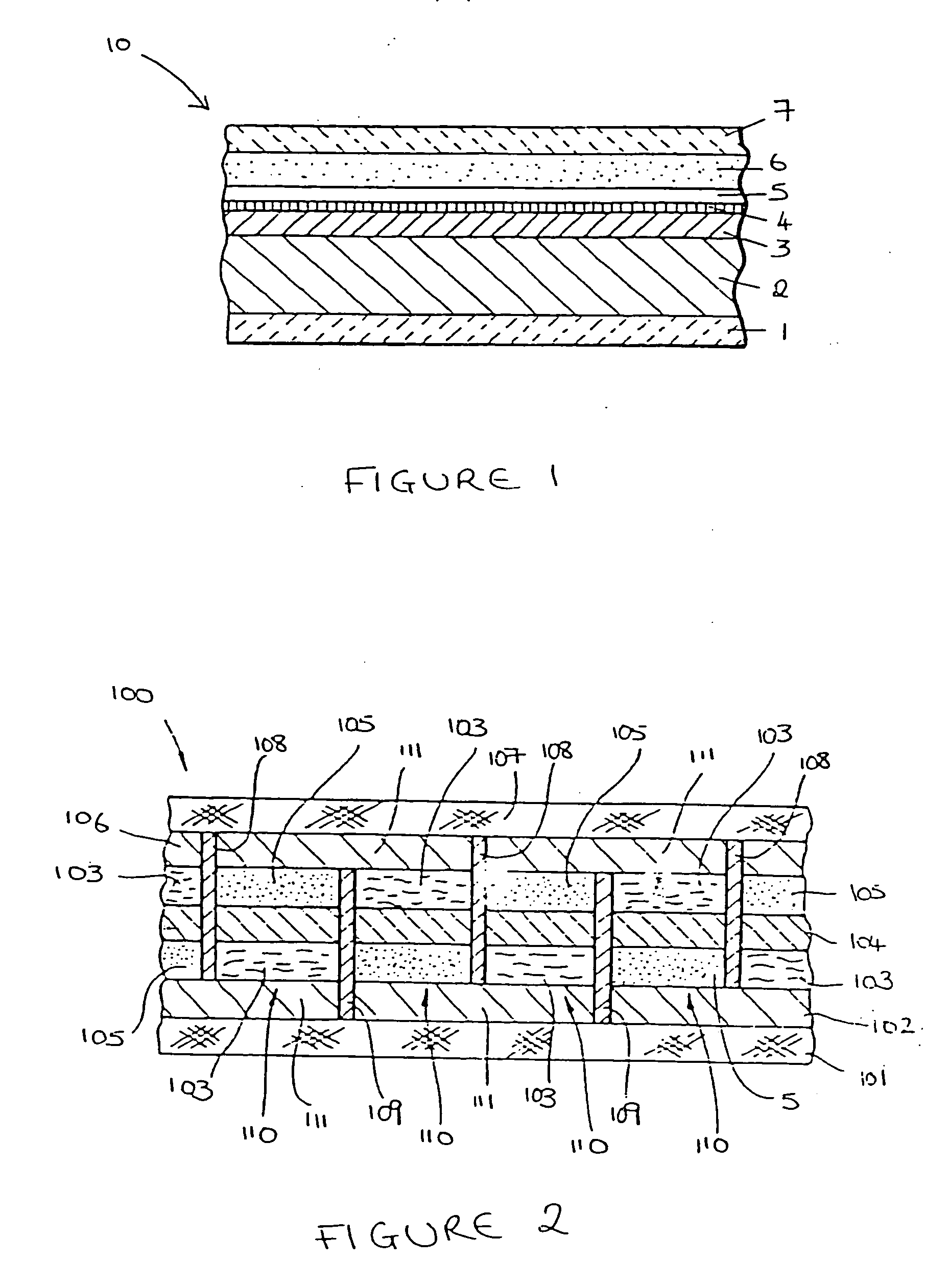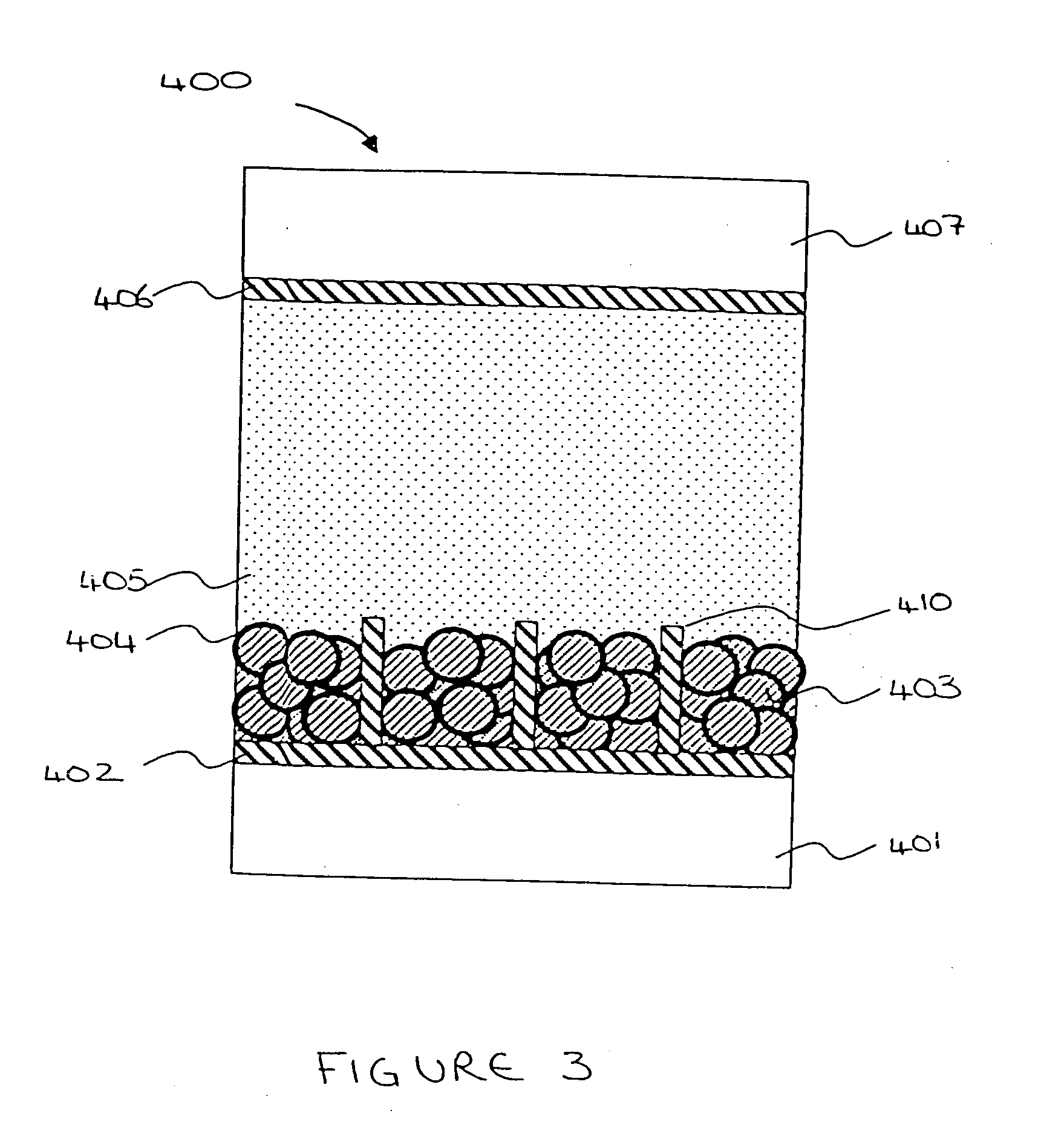Electrochemical cell structure and method of fabrication
- Summary
- Abstract
- Description
- Claims
- Application Information
AI Technical Summary
Benefits of technology
Problems solved by technology
Method used
Image
Examples
Embodiment Construction
[0043] The present invention relates to an electrochemical cell such as a Dye Sensitised Solar Cell (DSSC) or an electrochromic display (ECD). One electrochemical cell 400 of the present invention comprises, with reference to FIG. 3, a first transparent insulating substrate layer 401; a first transparent conductive oxide (TCO) electrode layer 402; a metal oxide layer 403; a sensitiser (dye) / electrochromic material layer 404; an electrolyte layer 405; a second TCO electrode layer 406; and a second transparent insulating substrate layer 407.
[0044] The first and second transparent insulating substrate layers 401, 407 are preferably glass or plastic. The metal oxide layer 403 is preferably titanium dioxide (TiO2) and is a semiconductor.
[0045] The metal oxide layer 403 should preferably be a material which promotes intimate adhesion of the sensitiser (dye) / electrochromic material layer 404 on its surface. Additionally, the particles of the metal oxide layer 403 must be reasonably light...
PUM
| Property | Measurement | Unit |
|---|---|---|
| Fraction | aaaaa | aaaaa |
| Diameter | aaaaa | aaaaa |
| Diameter | aaaaa | aaaaa |
Abstract
Description
Claims
Application Information
 Login to View More
Login to View More - R&D
- Intellectual Property
- Life Sciences
- Materials
- Tech Scout
- Unparalleled Data Quality
- Higher Quality Content
- 60% Fewer Hallucinations
Browse by: Latest US Patents, China's latest patents, Technical Efficacy Thesaurus, Application Domain, Technology Topic, Popular Technical Reports.
© 2025 PatSnap. All rights reserved.Legal|Privacy policy|Modern Slavery Act Transparency Statement|Sitemap|About US| Contact US: help@patsnap.com



